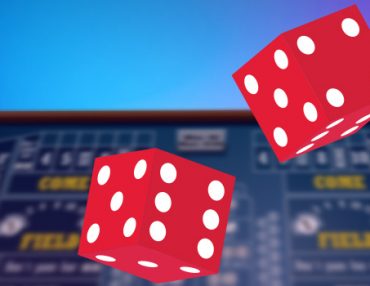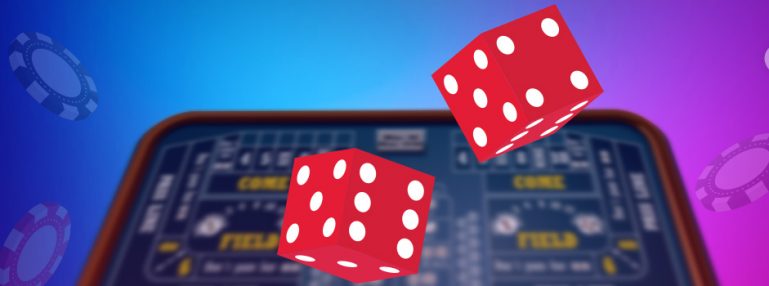If you’re about to hit the Craps table, you might want to learn how to shoot dice first. Throw like a pro, feel like a pro!
Craps is a unique game for many reasons.
Firstly, it’s a rare dice game in a world of table games that involve playing cards or roulette wheels.
Touching the equipment, be that the cards or the wheel, is a big no-no when you play games in a brick & mortar casino.
But in Craps – the king of dice games – the casino makes an exception, as players get to have a say in the random outcomes by throwing the dice.
But throwing – or shooting – dice isn’t as easy as it sounds.
If you want to play Craps but don’t know how to shoot dice, you could run into some trouble at the table.
Throwing a pair of dice onto a gaming table might look easy, but there are pitfalls galore.
- When do you get your turn to throw and how many throws do you get?
- What types of throws do the dealers consider? And what is your job as the shooter?
Let’s dig deep into how to shoot dice in Craps and figure out what it takes to become a super shooter!
How to play Craps
Let’s assume you haven’t yet learned how to play Craps and start from the beginning. Craps is a casino game where one player throws a pair of dice down the table, and other players bet on the outcome.
In its most simple terms, especially when you’re betting on one-roll single numbers, craps is a very easy game to play.
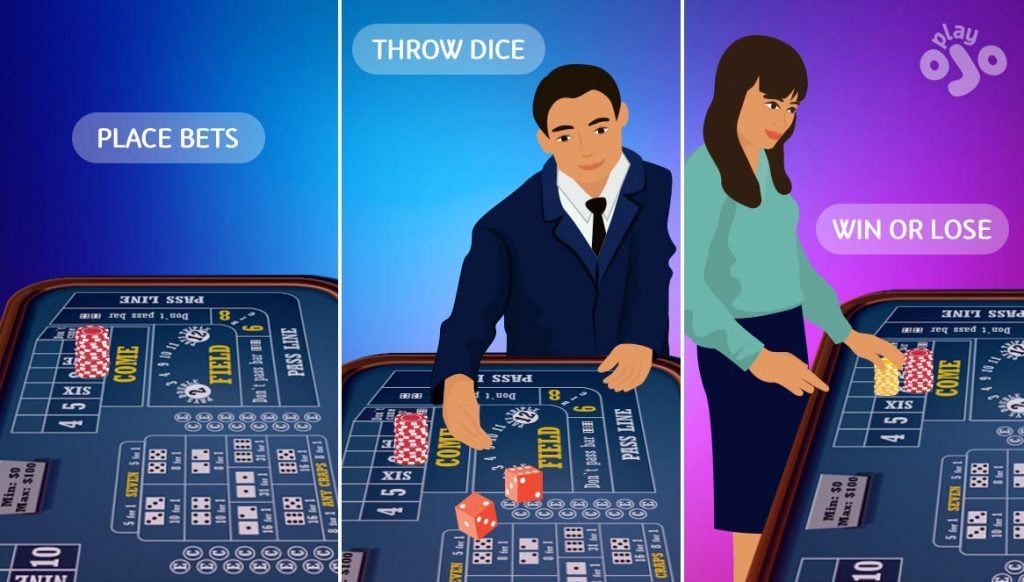
But most of the time in craps, you are not just betting on numbers, nor are you betting on just the next roll.
In Craps, you can place ‘multi-roll’ bets which carry over onto the next throw, depending on the outcome. The most famous multi-roll bet is called the Pass Line bet.
Craps is played in 2 phases – the Comeout and Point. First, a player throws the dice. If they throw a 7 or 11, the Pass Line bets wins.
If they throw a 2, 3 or 12, the Pass Line bet loses. If they throw any other number, they establish what’s called a Point. The Pass Line bet remains active but carries over to the next throw.
The player then keeps throwing until they throw the same Point number (at which point the Pass Line bet wins), or a 7 (the Pass Line bet loses, and we go back to the first phase, a new Comeout roll.
Sounds complicated, but it’s actually fairly easy to understand once you get the hang of this key sequence. You can learn more about how to play this unique dice game in our How to play craps guide.
What is the shooter and what do they do?
In Craps, the shooter is the player chosen to roll the dice.
They stand at the opposite end of on oval-shaped table to the casino staff, and are usually surrounded by the other players in the game.
When all bets have been placed, the stickperson will pass the dice to the shooter, who will roll the Comeout.
Unless you are very unlucky, your turn as the shooter will last between roughly 5 and 15 rolls. If you’re extremely lucky to avoid a 7, you might even roll 20 times or more.
Not everyone can become the shooter
Only players who are actively betting can qualify to be the shooter. More importantly, when you are the shooter, you are obliged to place a Pass Line or Don’t Pass bet.
Indeed, you must have an interest in the Craps sequence (the Comeout and Point phases) you are about to throw.
How the shooter is chosen
Shooters are chosen by the casino staff in turn, going clockwise around the table.
If you’ve just joined the table ahead of the current shooter, you might need to wait a round for your turn, as others may have been waiting much longer.
When the current shooter finally rolls a 7 or ‘craps out’, their turn is over, and the dice are given to the next player.
Shooter turns can last quite a while, so you may need to be patient.
How many rolls does the average shooter get during their turn?
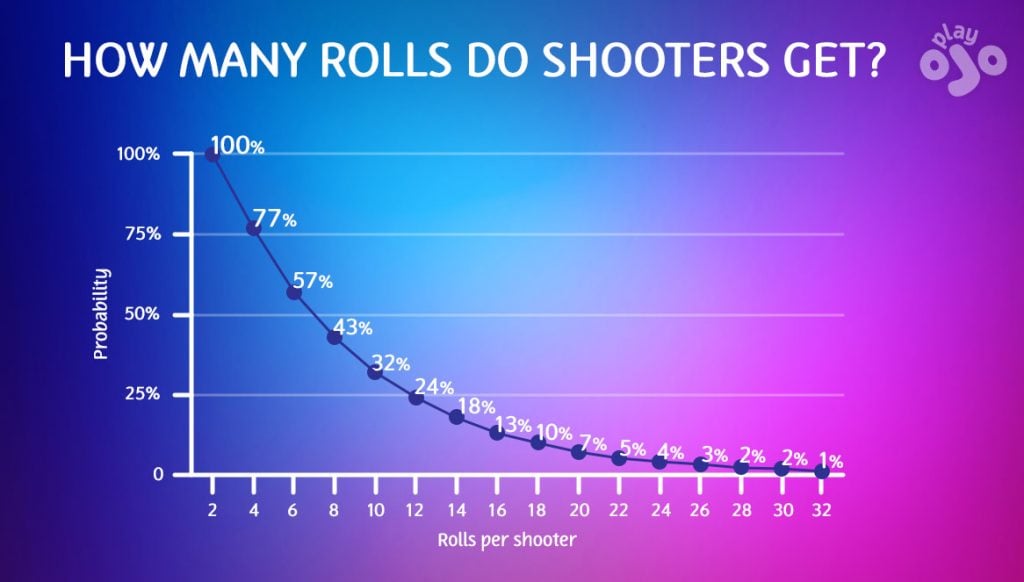
A typical shooter is likely to get a good chunk of time at the table. In fact, the average is actually around 7 rolls per shooter.
You are guaranteed to get at least 2 rolls because in the worst-case scenario, you throw a Point on the Comeout roll and then a 7 to end the sequence.
You’ll have an 89% chance of shooting 3 or more times. A 49% chance of surviving until the 6th roll and a 10% chance of making it to the 17th roll.
1 in 100 turns as a shooter, you’ll get to throw a whopping 32 rolls. It’s incredibly rare, but if you shoot dice nonstop for 1 hour without throwing a 7, you’ll earn the title of Golden Arm!
How to shoot dice?
It’s your turn to be the shooter, and the stickperson pushes the dice towards you. Surely you just grab ‘em and throw? No dice! There’s a technique to shooting dice, and a few rules you must follow too.
Casinos are taking a big risk allowing players to touch their equipment and literally have a hand in the results of the dice. They need the dice to be random, not just to keep hold of their gaming licence.
But because randomness makes it impossible for players to win consistently. And if the players can’t beat the game, the casino wins.
This is why casinos impose a number of rules to guarantee as much randomness as possible, and to prevent any form of cheating such as substituting loaded dice, or illegal throws.
Here’s the step by step guide to shooting dice:
#1 Place a bet on Pass or Don’t Pass
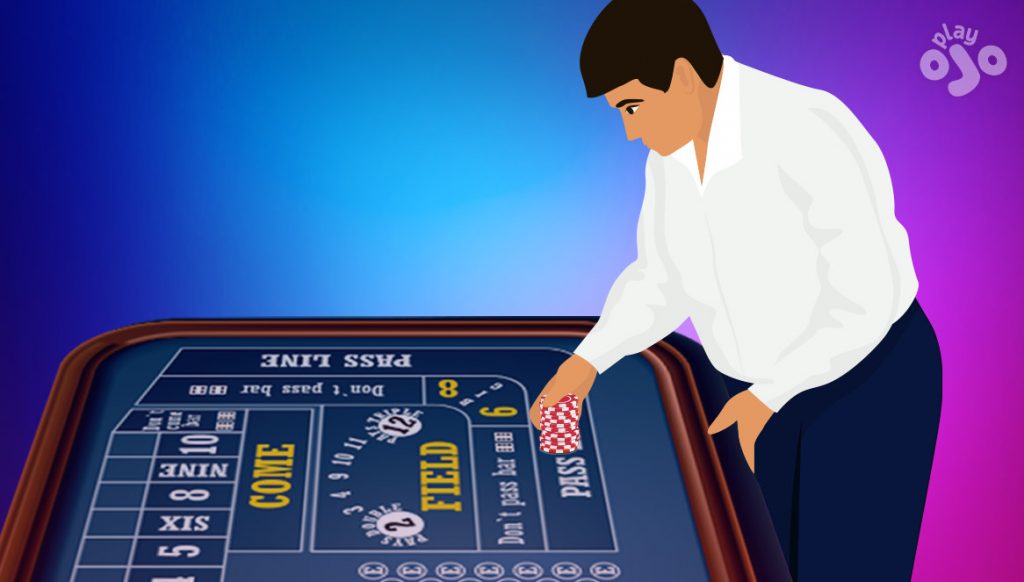
Only players who are actively betting qualify to be the shooter. And more importantly, when you are the shooter, you must have an interest in the Craps sequence (the Comeout and Point phases).
#2 Learn over and pick up the dice from the table with one hand
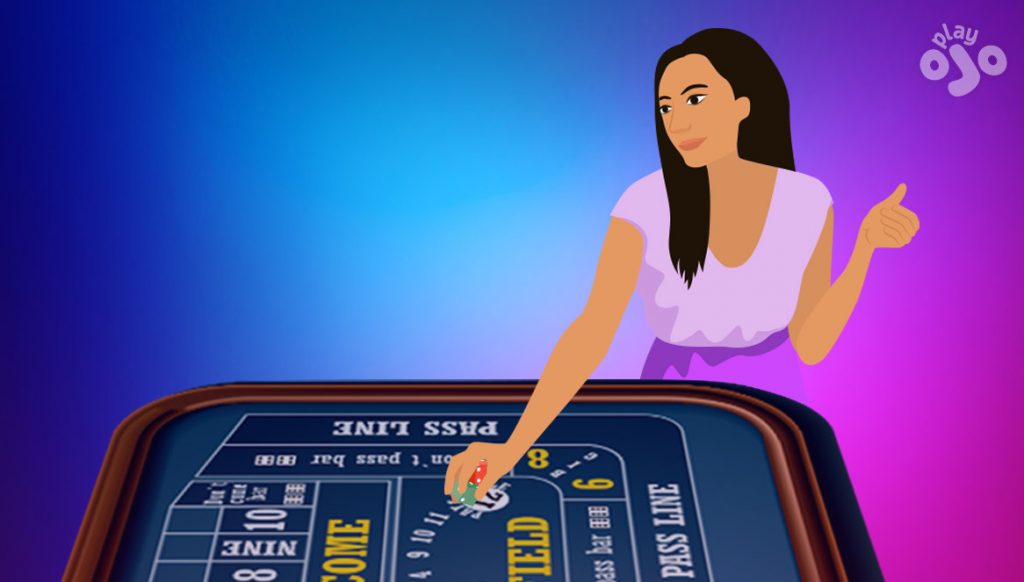
In some casinos, the stickperson may offer up to 5 different dice, from which you need to pick 2. The unused dice are returned to the stickperson’s bowl. Once you pick up the dice, no more betting is allowed.
#3 Hold both dice in one hand
![[#3c: Split screen graphic showing 1 dice in each hand (and a red cross) on the left, and 2 dice in the palm of 1 hand on the right (with a green tick)]](https://www.playojo.com/blog/wp-content/uploads/2022/04/3с-1024x582.jpg)
If you want to give them a shake, don’t do it with both hands cupped, as you’ll get a warning from the staff due to the risk of switching dice.
If you want to change shooting hands, put the dice on the table first.
Although you might think it adds to your shooting style, don’t kiss or blow on the dice, especially post-COVID!
If you want to ‘set’ the dice – pick the direction specific sides of the dice should face (e.g. Snake Eyes facing up) – that is allowed, but do it quick so it doesn’t delay the game.
#4 Toss both dice at the same time
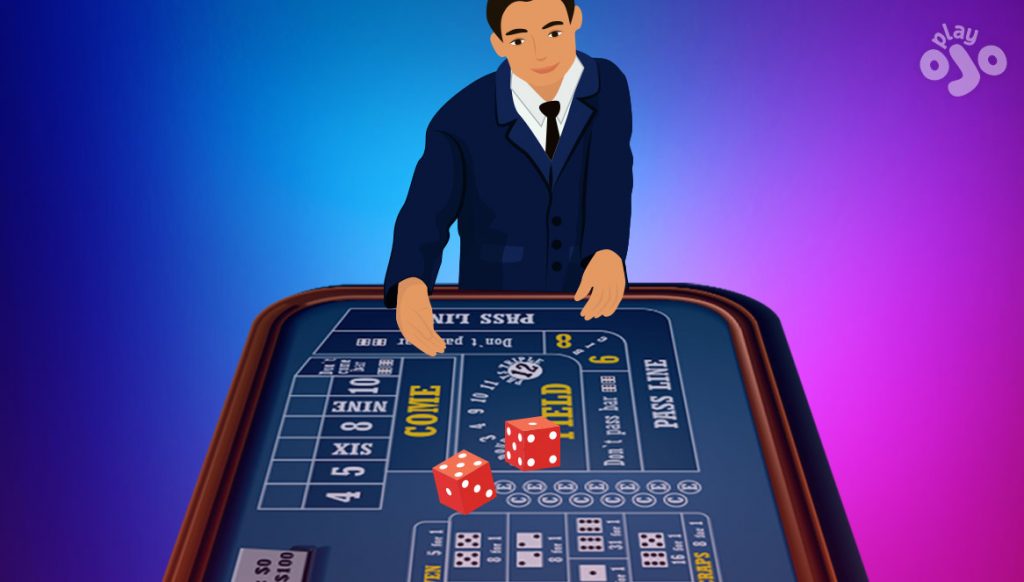
There are many techniques for shooting dice. Some toss from the palm, others hold them between thumb and forefinger or middle finger.
Do what feels natural, as long as you only use one hand. Toss the dice through the air, in a smooth arc, towards the far end of the table opposite.
Avoid throwing the dice higher than the eye-line of the staff. You will usually get a few chances to shoot, so you should be able to develop a consistent technique.
#5 The dice must hit the back wall
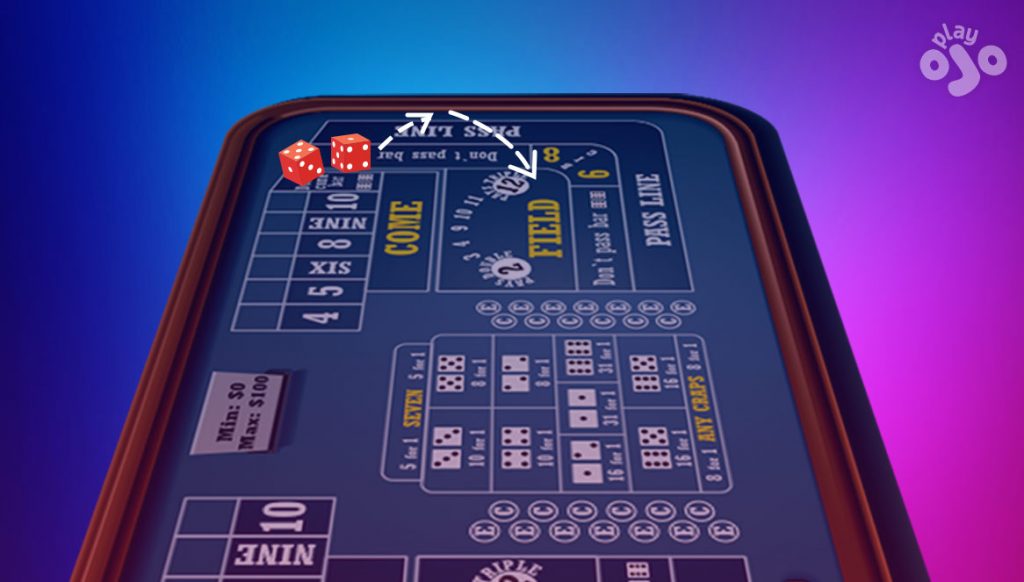
Provided at least one die hits the wall, or both dice made it most of the way there, casinos may let it slide once or twice.
If you don’t give them enough juice and they land well short of the wall, they may call ‘no roll’.
#6 Avoid void throws
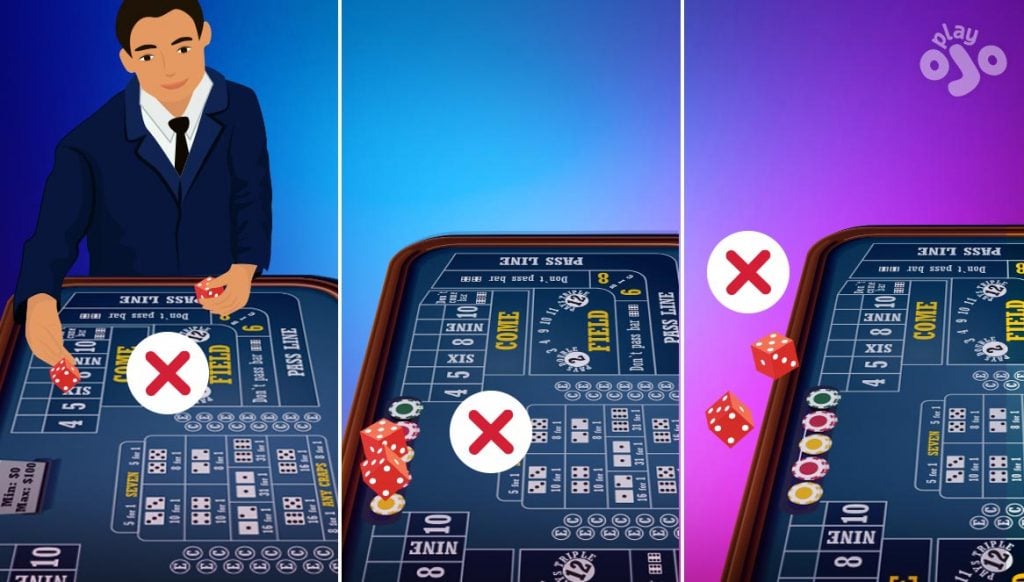
If only one die is thrown, or if a die lands in a prohibited area of the table, or outside the table, the dealer may call a void throw.
It’s pretty obvious, but if one die sticks in your palm while the other is released and hits the back wall, the shoot is void, and you throw again.
Similarly, if you shoot high and wide and one or more dice ends up on the floor, it’s a void throw and you will also be offered fresh dice by the stickperson.
If a die lands in areas where chips are stacked, or the stickperson’s bowl, it will also be void.
The shooter’s mission
Because you have to place a bet on the Pass Line or Don’t Pass in order to be chosen to shoot, you’ve got a vested interest in what you shoot.
Let’s assume like most well-adjusted Craps players, you bet the Pass Line.
- Shoot 7 or 11: You Pass! You win your Pass bet, keep the dice and start a new Comeout roll.
- Shoot 2, 3 or 12: You’ve Crapped out L You lose your Pass Line bet but keep the dice and start a new Comeout roll.
- Shoot 4, 5, 6, 8, 9 or 10: You’ve established a Point, and now the fun begins.
Once you’ve established the Point, your goal is to throw another Point before you throw a 7. So you Pass Line bet wins, and probably everyone else at the table too.
There are 6 ways you can throw a 7 – more than any other dice total – so avoiding one isn’t easy.
All shooters eventually throw a 7, as that’s how we switch from one shooter to the next.
Here are the possible outcomes once you are shooting the Point phase:
- Shoot the Point: All Pass Line and Come bets win! You’ve brought some luck to the table, and now you go again. Fresh Comeout roll please!
- Shoot any other number except 7: This is a meaningless roll – except for players who have one-roll bets in play. You roll again.
- Shoot a 7: Boooo, you lose, everyone loses and your time as a shooter is up. Place the dice on the table and step aside. It’s time for a new shooter, and a new Comeout roll.
How to shoot dice in Street Craps
We’ve just covered how to shoot dice in a casino.
But these skills will come in handy if you find a time machine, go back to a New York Street corner in 1925 to play Street Craps.
We might have written the ultimate casino guide, but we know a thing or two about playing in the real world too, you know!
The game of street Craps is pretty similar to casino Craps, with a few key differences.
- First, when you shoot craps on the street, there’s no table, so you’ll be shooting dice literally on the street.
- Second, you might also get to shake the dice in a cup, rather than your hands, which also would not be allowed in a casino.
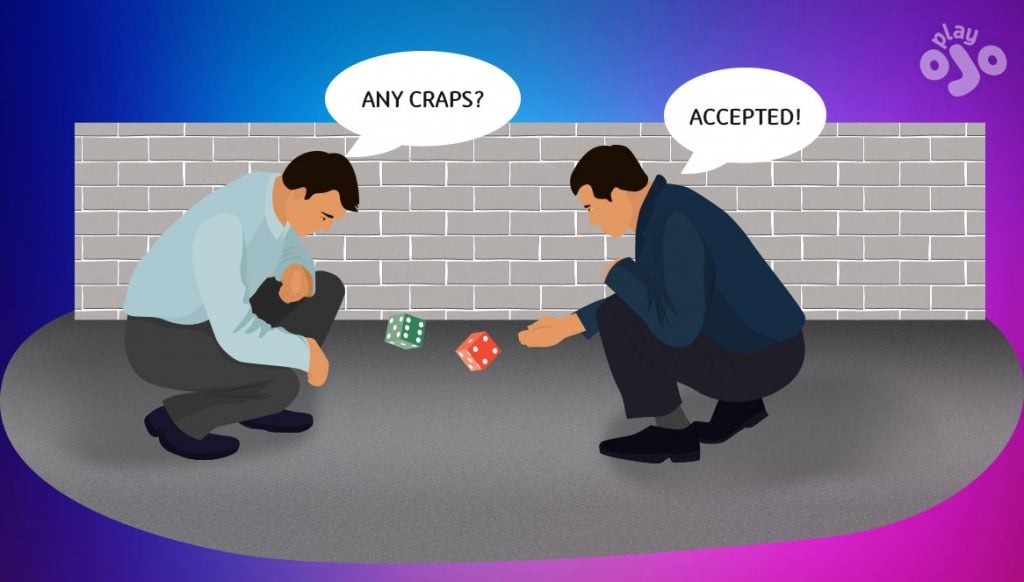
Third and by far the most important difference, players bet against each other, rather than against the casino.
The shooter has to make a Pass Line bet, and another player must take the other side of the wager – the Don’t Pass – for the game to begin.
There are other simplified versions of Craps numbers of bets, but as there is no casino involved, you’ll have to offer up a bet and see if any of your fellow players – who are now effectively your opponents – are interested in taking it.
It is illegal to play Street Craps for real money in the UK and most countries by the way – it counts as unlicenced gambling. So, we recommend you either play for fun, or get back in your time machine before the Five-O catch you!
A summary of how to shoot dice
On the face of it, shooting dice could not be a simpler concept. You throw two dice on a table. Who could screw that up?
But once you add a casino into the mix, with all their rules and security obsessions, things get a little more complicated, and it’s important to learn the rules to shoot dice.
Wait till you get the green light from the dealers. Then throw both dice from one hand – not too short, not too hard, and not too high! – and provided they bounce off the back wall, you’ll do just fine.
Fortunately, when you play Craps in an online casino, none of these guidelines and techniques matter, because the computer software – or in the case of Live Dealer Craps the provider’s staff, or a machine – throw the dice for you.
Shooting dice online is convenient and more accessible in terms of cost too. But if you ever get the chance to play in a live casino environment, I recommend you give Craps a try.
And now you’ve ready this, you’ll at least know how to shoot dice and hopefully win. Good luck!







